Wearables: 2014 and Beyond
by Stephen Barrett on January 15, 2015 11:50 AM EST- Posted in
- Wearables
- Apple
- Microsoft
- pebble
- Android Wear
- Microsoft Band
- Fitbit
Wearable Products in 2014
Microsoft
In 2014, seemingly out of nowhere (as there were no leaks or press ahead of time), Microsoft launched their first wearable since 2004 with the Microsoft Band. The Microsoft Band utilizes a Cortex-M4 processor and thus runs an embedded OS, not Windows NT. As with other devices using microcontrollers, its first focus is fitness tracking and not smart watch functionality (although that is also included). Microsoft however does fitness slightly differently than their competitors and actually regards this as the launch of both the Microsoft Band and their health platform, Microsoft Health.
Microsoft Health is a cloud service, such as OneDrive, that aims to help improve the health of its users through data analysis and actionable feedback. Activity tracking devices and apps that connect to Microsoft Health publish data, with your permission, to the Microsoft Health server. Microsoft claims their cloud data framework and analysis provides the only total health service available. Additionally, the Microsoft Health framework is referred to as an open platform, therefore other companies can interface with it as both publishers of data and subscribers of analysis. Microsoft Health also connects to the existing Microsoft service, HealthVault, which contains personal and family medical information and lab results.
The Microsoft Band itself is the combination of 10 sensors, including some interesting ones such as skin temperature, UV light, and galvanic skin response. Uniquely, the Microsoft Band works with all three major mobile operating systems (iOS, Android, and Windows Phone) by connecting to the corresponding Microsoft Health app. However, you can perform activities (such as running) without a paired device.
Another unique feature is the continuous heart rate monitoring. Other devices, such as Android wear, only periodically query the wearer’s heart rate. Microsoft claims this allows them to do better holistic analysis of health. In my experience with the Moto360, depending on how tight you wear the device, the heart rate sensor may not work. Comparatively, the Microsoft Band is mechanically designed so the best way to wear it is always in close contact with your skin. Finally, Microsoft will even license the electronics and software design of the Microsoft Band for other companies to create their own wearables connected to Microsoft Health.
The band itself provides some smart watch features such as calendar, email, and messaging notifications. When paired with a Windows Phone, Cortana support is also available for similar functionality to Google Now. One difference between Android Wear and the Microsoft Band is with app interfacing. As mentioned previously, Android Wear relies on apps running alongside (on your smartphone) or on the device to do things such as run tracking. The Microsoft Band instead has built in support for run tracking, and can publish that data to both Microsoft Health and any compatible app like RunKeeper. Therefore, the Microsoft Band out-of-the-box has several fitness related functionalities without relying on 3rd party apps.
Given my less-than-stellar experience with RunKeeper providing run tracking on Android Wear, a first party approach to fitness is appealing. However, it remains to be seen if Microsoft can keep pace with the wide open field Android Wear provides to app makers.
All of this combined makes a strong argument that Microsoft is ahead of their competition for health related wearables. Google has Google Fit, which plans to provide similar cloud-health functionality and already has some APIs for apps to connect with it, but the web site for Google Fit is downright embarrassing and looks like a simple placeholder with almost no valuable information. Google also had Google Health, which was similar to Microsoft HealthVault, but Google shut down the service in 2011.
I have requested a Microsoft Band for review to analyze how well Microsoft has executed both the Band and Health launches. There are of course other aspects to the Band (such as guided workouts) I will cover at that time.
Apple Watch
While this is a 2014 year in review article and Apple technically did not launch anything in 2014, it is worth mentioning their announcement of the Apple Watch. In America at least, it is often the case that a technology will arrive on the market well ahead of Apple’s embrace and not see widespread acceptance. When Apple finally deploys the same technology, the technology crosses the chasm and sees widespread proliferation. NFC payment and Apple Pay are a good example. I saw one or two places offering NFC payment before Apple Pay; now there are dozens. Therefore, Apple announcing the Apple Watch is a watershed moment for wearables.
Officially coming to market in spring 2015, the Apple Watch experience appears to be more similar to Tizen based Samsung devices than Android Wear. To start with, the device itself contains WiFi in addition to Bluetooth and therefore should have more freedom than a standard Bluetooth enabled wearable. The core functionality of the device also does not revolve around Siri but appears to be a full blown iOS style launcher.
The Apple Watch likely uses an application processor (AP) and does not rely entirely on a microcontroller. This also correlates with the Apple estimated battery life of one day due to high consumer usage, as an AP will draw more power than a microcontroller when in use. The exact quote from Tim Cook is, “I think given my own experience, and others around it, that you’re going to wind up charging it every day. Because you’re going to use it so much.” Utilizing an AP opens the doors to more use of frameworks and APIs than low-level embedded coding, and therefore facilitates the 3 party app model.
Apple intelligently recognized the need for personalization and styling in a wrist worn wearable and will offer a staggering 34 different models of the device with varying cases, sizes, bands, and editions (Sport, Standard, Gold). Two interesting innovations set to launch with the device are a pressure based touch screen and a tap feedback output, providing a tap sensation in addition to a traditional vibration. We will have more coverage of the Apple Watch when it launches in 2015.
Others
Several other wearables exist (and are more popular in the case of Pebble and Fitbit), but these are going to face an increasingly difficult battle for relevancy in the face of efforts from the main software ecosystem players – Apple, Microsoft and Google. However, Microsoft’s strategy of licensing hardware design and Android’s more off-the-shelf operating system approach means we should continue to see unique wearables going forward.
Pebble Steel
Pebble is likely the most mature smart watch wearable at this point, given its launch in 2013. Pebble devices possess many days of battery life, a unique perk over the competition. Pebble owes its battery life to the use of a low power microcontroller, low resolution e-paper display, non-touch screen, and only three sensors (accelerometer, compass, light sensor). Therefore, this is certainly not a smartphone on your wrist.
Interfacing with Pebble is accomplished with the set of four buttons on its sides. Pebble began as a dedicated notifications assistant, relaying notifications from paired devices, but has since expanded with some simple apps from 3rd party developers like QR code display to more complex apps such as GoPro control and RunKeeper. In 2014, Pebble launched the follow up, Pebble Steel. The Pebble Steel upgrades the mechanics from plastic to metal, and as I noted with my time using the leather banded Moto360, metal is much appreciated.
Pebble boasts the best water resistance of the lot, at an incredible 50 meters of depth. Other devices sporting IP67 are only okay up to a meter for 30 minutes, meaning if you jump into a pool you need to be very careful how far you let your arm drift down so you might as well take the device off.
FitBit Charge and Surge
Fitbit launched as an activity tracker in 2008 and has since been iterating on their designs. The first several revisions were clip on devices attached to your clothing, but since the Fitbit Flex in 2013 all have been wrist worn. I personally see wrist worn Fitbit devices everywhere and even worn as fashion accessories. My sister wears a Fitbit that is so decorated with 3rd party accessories it is difficult to discern it as a Fitbit instead of a simple bracelet.
These devices track steps taken, calories burned, and distance traveled. They can also do sleep tracking if you wear them 24 hours a day. Groups of coworkers or friends can use a connected smartphone app with social features to compete on how many steps taken and individuals can set personal step goals.
The Fitbit Charge launched in November 2014 and contains a small OLED display that boosts the utility of the Fitbit. The display shows the time, how many steps taken, and displays caller ID if your paired smartphone rings. The time and steps taken display are of notable utility as they prevent a trip to a pocket or purse to find the same information.
The Fitbit Charge HR supplements the Charge with a heart rate sensor. This expands the Fitbit further into a fitness device and begins pushing Fitbit into active activity tracking, such as running or cardio workouts. Alongside launching the Charge HR, Fitbit also expanded their app to record workouts, food eaten (through a barcode scanner or manual entry), and badge earning through workout goals. This was a significant launch for Fitbit to leverage their popular steps tracking position into remaining competitive with the bigger smart watch players.
The Fitbit Surge was announced in 2014 but will launch in early 2015. The Surge adds GPS and an LCD display to extend Fitbit’s activity tracking and smart watch functions.



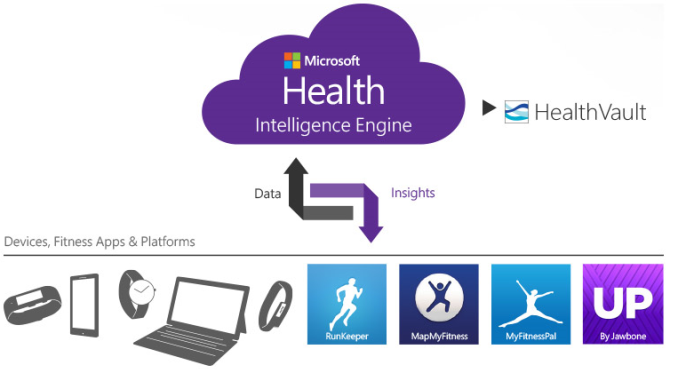
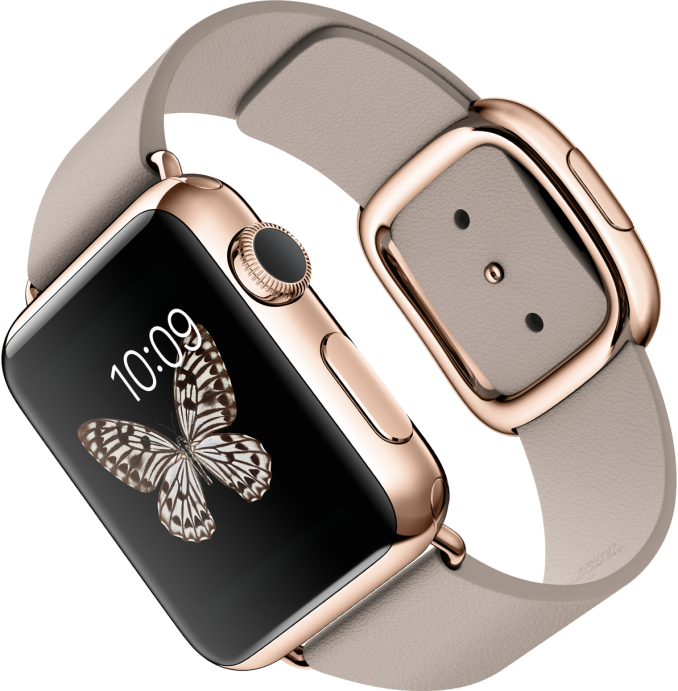
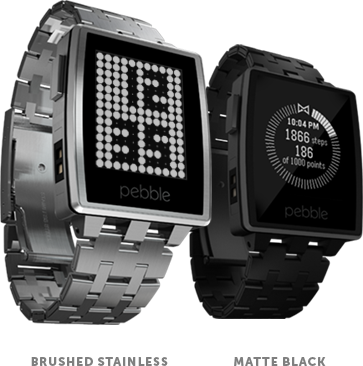
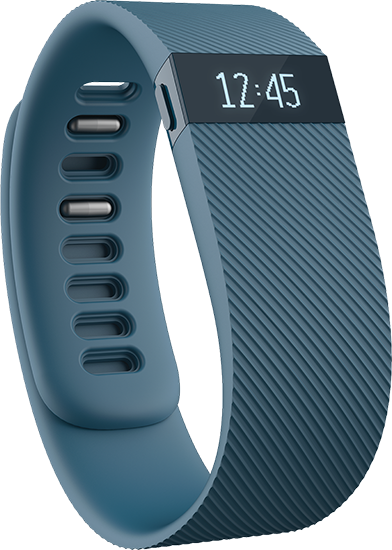
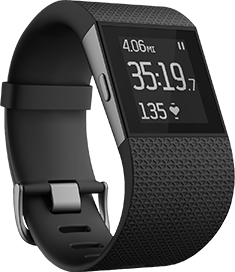








79 Comments
View All Comments
wallysb01 - Thursday, January 15, 2015 - link
But what's the value added over a simple heart rate monitor, learning a thing or two, and doing it enough to just "know yourself"? People have been training based on fatigue or maximum exertion percentage for a long time now. As former triathlete and fitness nut, I just don't see how these things get going. A decent heart rate monitor is what, $20. Get a bike computer for another $20. You have the distance/speed already on any treadmill or stationary bike. So we're basically just talking runners, or bikers that MUST have a GPS.I just have a really hard time seeing very many fitness nuts spending $100-200 on this thing, and applications outside fitness seem very pointless as well. So you get notifications on your wrist? You don't have to take out your smart phone? How much money are people going to be willing to pay for THAT? Maybe it won't get the backlash of Google Glass, but I see it failing in a similar way, as a novelty 5% of your friends will show off to you, while you go "eh, you payed how much for that?", and 3 years later its mostly dead.
Impulses - Thursday, January 15, 2015 - link
Fitbit actually has devices covering a lot of price ranges... I wanted something to monitor my runs, not because I need it (I've been running for the past 15 yrs since high school without it), but it appeals to my geek sensibilities.I wasn't interested in all day tracking, I KNOW I'm a sedentary geek, don't need to be told... So I ended up buying the cheapest Fitbit Zip model which is a little $50 clip on thing, and I only wear it in on runs or when I go biking.
As far as I can tell it works as well as any pedometer, and it's easier to use and better connected than any other device at the price range. I continue using it even after getting a Wear watch because I'd rather not run with a leather strap, or any kind of visible watch for that matter.
Penti - Thursday, January 15, 2015 - link
I thought Fitbit discontinued or at least stopped developing all non-wrist stuff. But it appears they still sell their clip-based ones.Impulses - Friday, January 16, 2015 - link
Nope, the Zip keeps chugging along, Best Buy still has them in stock all the time, etc. It's pretty solid for $50, specially if you just want it to track specific workouts as I do rather than all day monitoring. It even syncs up with Android devices now, which wasn't possible originally.Impulses - Thursday, January 15, 2015 - link
$200 for a decent smart watch doesn't seem like a terrible value proposition to me, having enjoyed the convenience of one and knowing what I'd otherwise pay for a nice looking watch that I wouldn't use nearly as much.name99 - Thursday, January 15, 2015 - link
"b) people who can't be bothered taking their smart phone out of their pocket, which is all those watches enable - a short cut to see something your smart phone could show you."So your argument is, "people won't pay for convenience"? Yeah, good luck with that.
90% of what's sold in America, from McDonalds and Starbucks to dog walking and gardening services to microwave ovens and dishwashers are based not on "could *I* do this myself?" but on "I'd rather pay more for convenience!"...
wavetrex - Thursday, January 15, 2015 - link
Simple. Make a product that doesn't suck.Let's look at a Smartwatch of today:
- Shitty battery life
- Weak performance
- Difficult to see in sunshine
- Not really useful for anything
- Bloody expensive !
No wonder (almost) nobody buys them.
Suggestions:
- Use E-INK ffsake!A watch should be visible at anytime without having it to turn on. It will also be perfectly visible in the sunshine and not consume power.
- If you want colors, use OLED and a way to turn it on via motion (shaking?) so you can look at it without actually "touching" the device.
- A permanent "deep sleep" mode, when not use only the detection sensor should be on. CPU, RAM, everything should be completely off and not consuming power.
- Design a simple and efficient OS from scratch that can initialize in less than 2 seconds from some fast flash memory, basically fast-booting every time you look at it, other than that the device would be almost OFF and not consuming power. PC Os'es like Linux (on which Android is based are NOT GOOD for these kind of devices!)
- No fancy animations and stuff in the interface, just simplicity and efficiency. THIS IS NOT A PHONE OR COMPUTER! It's a WATCH.
- Camera ? Putting a camera on a wrist watch ? That's madness ! Useless feature of the century...
- In time it will become cheap if a lot of people like them, consider them useful and buy them.
I know almost nobody from the tech companies will read this comment but... whatever.
Schnydz - Thursday, January 15, 2015 - link
I can agree with most of this. It comes down to simplicity doesn't it? It seems the smaller the device the more simpler it should be. So, if we are talking about a watch then keep the UI/UX as simple as possible. Have tried using the Moto360 and man what a useless PoS. I have a feeling the apple watch with be more of the same. In my opinion MSFT is on to something with their fitness band. The design and "feel" just needs a couple of revisions...it's just a tad too bulky. But, keep it simple!nevertell - Thursday, January 15, 2015 - link
"Design a simple and efficient OS from scratch that can initialize in less than 2 seconds"Linux is able to do that, provided that you don't need to run a virtual machine to execute all of the applications and you don't load all of the modules you can get in a standard linux tarball off of the repo for armv7 kernels.
XabanakFanatik - Thursday, January 15, 2015 - link
My Microsoft Band takes 4 seconds from the moment you push the power button to being completely booted and usable for all features. I'm not sure why any other watch takes longer.